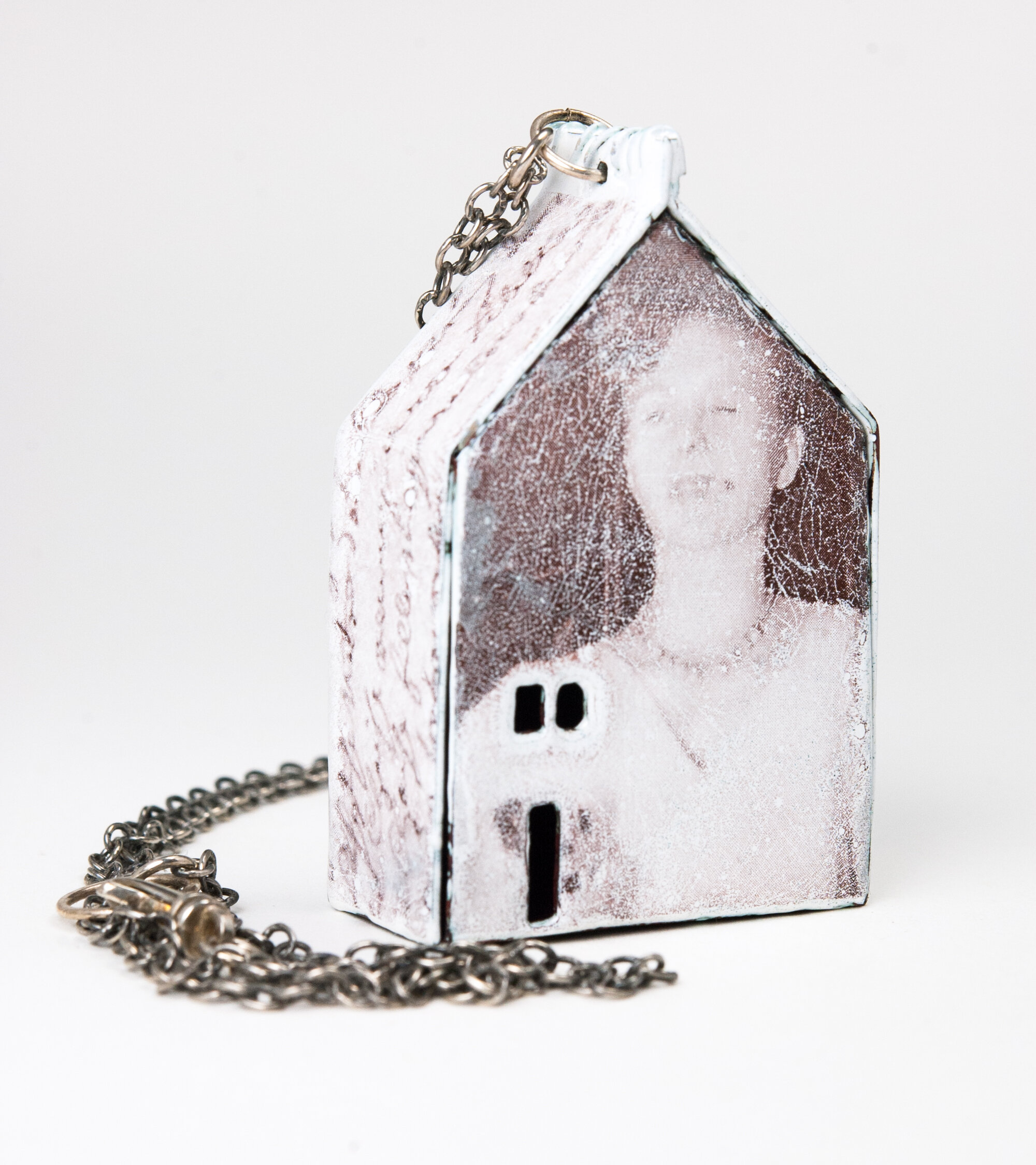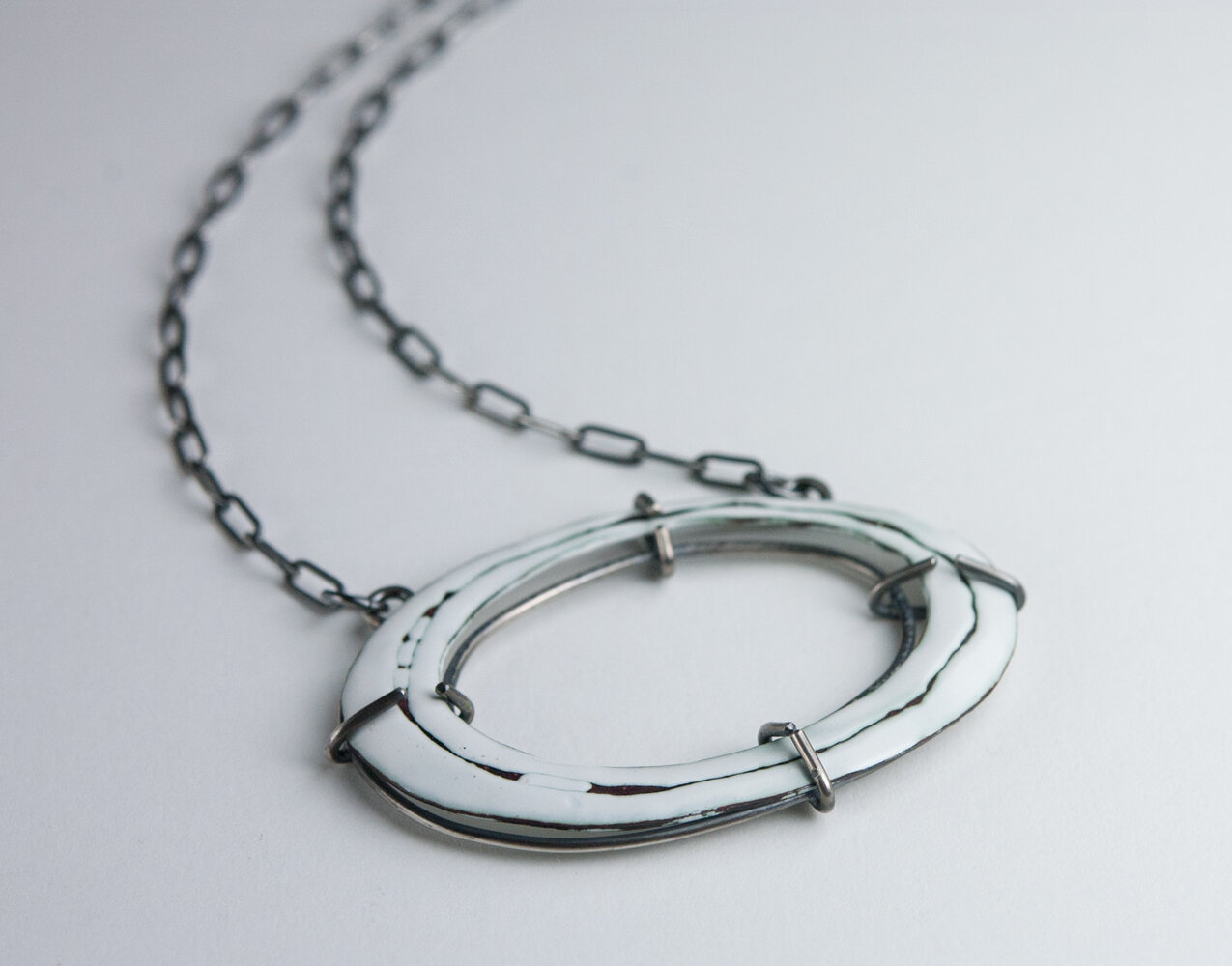Steel is a very strong and durable material to enamel on in thin gauges. The earrings pictured below were made with 26 gauge enameling iron (a form of low carbon steel). This wouldn’t be possible with copper in that thin of a gauge because it is inherently soft, making it prone to warping and chipping. Making earrings this large and flat in copper would require using 22 gauge at a minimum, and that would make them far too heavy for the average customer.
Only certain types of steel can be successfully enameled. You want to look for low carbon steel, enameling iron or stainless steel. Thompson Enamel sells enameling iron and pre-enameled steel sheets that you can cut with snips or with a jeweler’s saw. If you go this route, please be careful. You are sawing into glass, and it shatters and splinters into the tiniest of pieces. I will typically cover both sides with masking tape, draw the image on the tape and saw. It takes a hot minute and leaves an okay edge. Since you are going to cover it anyway, this shouldn’t be a problem.
Raw steel has to have a ground coat applied to both the front and back before powdered enamels or other colors of liquid enamel can be applied. The ground coat can be found at Thompson Enamel (GC-16), Clay Art Center (RM27 Metal Frit Enamel for Steel by Ferro) or WG Ball (Steel Ground Coat 12559). Kat Cole has been successful in applying colored liquid enamel to raw enameling iron without a ground coat, but she sand blasts it first. This gives the metal a lot of tooth and a varied surface, which makes it much more successful. Since I’m relatively new to this and don’t have a sand blaster, I’m sticking with the ground coat.
If you are interested in learning more about enameling on steel, there are some really great teachers out there, like Kat Cole, Alisa Looney, and Amanda Denison. I have taken classes from all three gals and highly recommend them all. They each offer different techniques for applying enamel and for surface design. Additionally, I found a great article that dives into enameling all different types of steel by Melissa Cameron here. Definitely check it out if you want to pursue enameling steel!
I am very excited to be using steel in my new jewelry. Admittedly, there is a bit of a learning curve, and it’s a bit harder to cut with a jeweler’s saw than copper, but I really love the ability to make things that are thinner and stronger, and consequently more lightweight than their copper counterparts. Please feel free to post your questions or comments. I’m no expert, but I’ll do my best to point you in the right direction.







